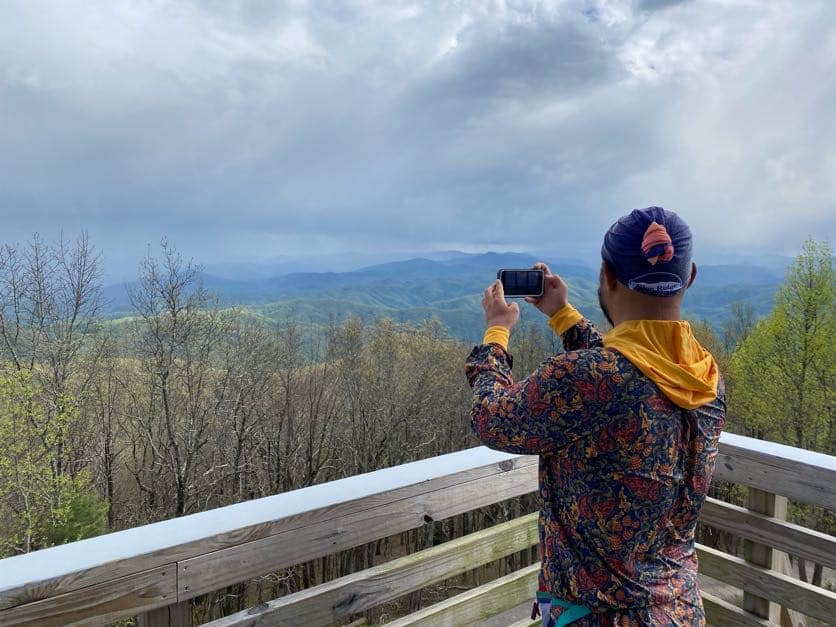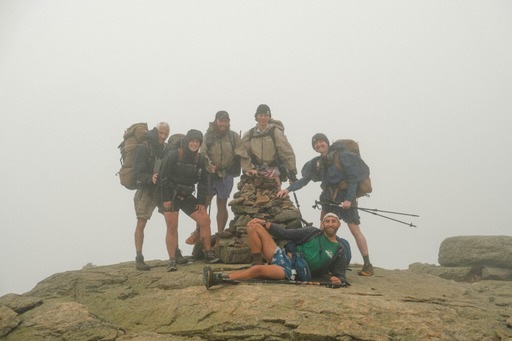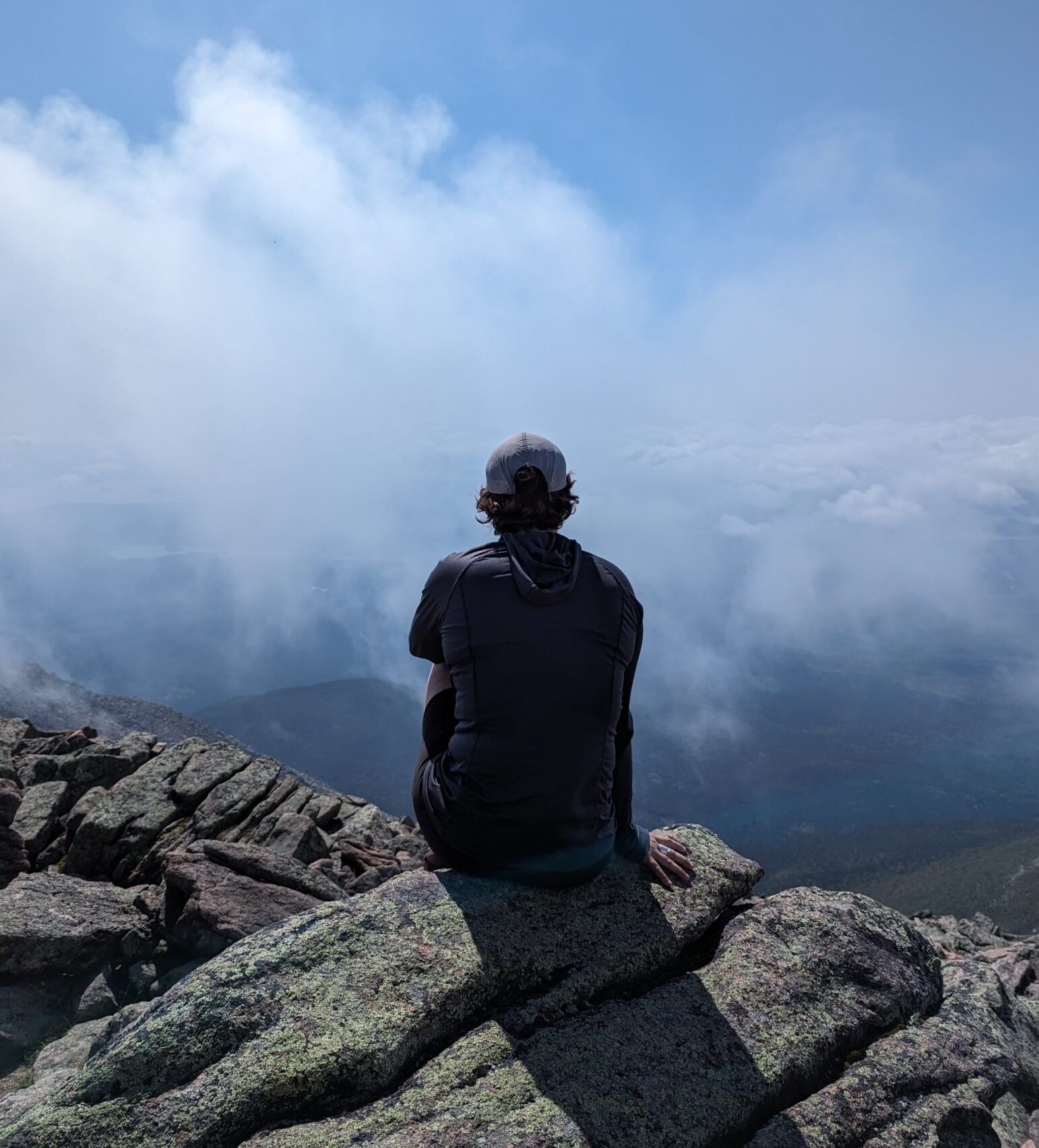The decision to undergo a thru hike is not an easy one. There are many things to consider, from food storage to shelter to your pack to the shoes you will inevitably wear down (multiple times). These choices and related opinions are incredibly contentious among hikers but more prevalent are the questions and disbelief you may encounter in your closest friends and family.
But there is no single thru hike that encapsulates every aspect of a long trail. Everyone is searching for different things when they throw on a pack and trek through the desert, forest or plains. My decision to pursue a thru hike of the Appalachian Trail was a highly personal one. I grew up in the undulating mountains near Shenandoah National Park, and view my ongoing thru hike as a journey home, in its own way, after living abroad for so long. The trail traverses land and forest I have hiked throughout my life, and my accumulated skills were suited to have this as my first thru hike.

I wanted to unpack the different aspects of a thru hike that may need to be considered in the planning process. Whether it is one of the Triple Crown, the Tour du Mont Blanc, the Camino, or something more remote, such as the planned Warrior Nomad Trail in East Africa, it depends on what will work best for you and your current circumstances.
All about the timing
Want to thru hike but no ability to quit your job or take a sabbatical? Consider a shorter trek, such as the Tour du Mont Blanc (170 km/105 miles) or the Peaks of the Balkans Trail (192 km/120 miles). Journeys such as the Appalachian Trail or the Pacific Crest Trail cannot be last minute decisions; most people take months or years before their hikes, saving and planning.

It is a privilege — financially, emotionally and physically — to be able to take six months and decide to walk from Georgia to Maine (or New Mexico to Canada, or California to Canada, take your pick). Timing for each individual person matters, along with the finances needed to fuel a thru hike, along with the required gear and minimum level of fitness for an enjoyable experience.
When I began toying with the idea of a longer backpacking trip, I first planned a summer trek of the Tour du Mont Blanc knowing I could spare ten days of vacation. It took nearly a year in advance and proper planning in order to step onto Springer Mountain in March 2023. Everyone’s circumstances will differ, but there are options on nearly every continent (except maybe Antarctica)!
Gearing Up
What are the unique requirements of different long trails? Once you have an idea of the trek you would like to pursue, it is important to ensure that you are equipped with the skills and gear to succeed.
On the Appalachian Trail, basic backpacking gear can get you from Springer to Katahdin. However, you also have to consider food storage, to ward off bears and mini bears (mice, rats and porcupines). Recent recommendations by the Forest Service and Appalachian Trail Conservancy led me to opt for a bear canister instead of hanging my food. Other trails such as Pacific Crest Trail or the Continental Divide may require crampons or ice axes in some sections, along with relevant mountaineering skills. Venturing through grizzly territory also requires bear spray and proper food storage techniques.

A scenic view somewhere along the Appalachian Trail
Preparing for a trek longer than a week also requires dialing in your gear. Creature comforts can be crammed into a 95 liter pack weighing fifty pounds, but those first few weeks of developing trail legs will be incredibly difficult. Honing gear into a lighter, streamlined pack not only makes organization easier, but lightens the strain on your back. Shakedown hikes before the start of a thru hike can condition your body physically and prepare for the mental checklist of backpacking. My favorite trick is after a shakedown to note which items never left my pack; those do not make the cut for the thru hike.
Due to the extended time period of a thru hike, do not forget your gear can shift or change. I started out in Georgia with a 15°F mummy bag, but quickly started sweating in my sleep as spring turned into early summer. A swap for a 40°F quilt keeps me warm on chilly mountain nights but not too warm.
Before my hiker hunger kicked in, I had a BearVault 450 that easily crammed 3-4 days worth of food. After a month, however, I had to upgrade to a larger size to fit my cravings: peanut m&ms, apple sauce and butterfingers. Anything can happen to your gear over the course of a hike, and it is important to be flexible and have the ability to adjust. Friends have swapped tents for hammocks, inflatable for closed cell sleeping pads, and adjusted their food storage system. Gear is highly personal and will also shift on different thru hikes!
Highlight reel
Some trails are more social than others. In the Alps in the summertime, you may be in mountaintop huts crowded with day and other thru hikers. On the vast expanses of the Continental Divide, there may be a handful of thru hikers in between town stops and national parks.
For me, the Appalachian Trail provides a social atmosphere that is reassuring for my first thru hike. It is hard to be truly alone on the East Coast; large cities are within reach, day hikers pass through and the popularity has exponentially increased since the advent of COVID-19. I set off from Amicalola Falls as hiker #1790, and it was not even the time of the early April bubble. Thousands of hikers hiked up the stairs of the waterfall in Georgia, with the peak of Katahdin on their mind. The sheer number of people on trail allows for easy friendships to form and camaraderie that makes muggy and tough days go by faster.

Meital with their hiking crew after a foggy summit
If your priority of a long hike is to avoid other people and truly immerse into an experience of solitude and wilderness, different routes may be the answer. The beauty of having dozens of long trails worldwide to choose from is the diversity in experiences. Each thru hike will also come at a different point in your life, and reflect the challenges and pleasures in each stage.
Keep it going!
This may not be an official statistic, but most thru hikers usually are already planning their next long trail before the current one is even over. The post-trail blues are similar to the comedown after an exhilarating backpacking trip or adventure. You’re left wondering, what comes next?
To reduce the inevitable restlessness that will hit after I scramble up Katahdin and attempt normalcy again, I have already started scheming when my next long trail will be. I am setting my sights on the Continental Divide Trail (CDT) and the Pacific Crest Trail (PCT) in a few years to have a wilder and expansive experience through more rugged landscapes. Use your long walking hours like I do to build up your bucket list, and think about the different environments, people and gear you want to curate the next time you walk a thousand miles (or more)!
The adventure is never over, it just continues.




